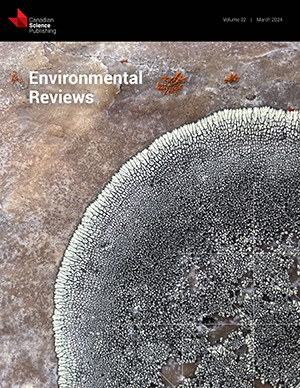蓝藻华的定量定义
IF 5.1
3区 环境科学与生态学
Q1 Environmental Science
引用次数: 0
摘要
蓝藻华代表了一个全球性的问题与人类健康和经济和生态系统的滋扰影响。到目前为止,我们一直使用武断的,有时令人困惑的标准来决定我们是否在蓝藻华的存在。通过对1953年至2022年间发表的研究进行科学计量学分析,我旨在确定一个可用于量化蓝藻华的数值阈值。我考虑了几种方法方法(实地、实地实验和卫星数据)和各种环境(沿海、海洋和大陆生态系统)。分析显示,48%的论文定性地使用了“蓝藻华”或类似的术语,而没有提供或采用定量定义。这些论文的重点是与蓝藻生态学相关的其他主题(78%),而其他一些(21%)则通过视觉标准(浮渣可视化或水变色)来定义水华。在另一半(52%)中,有一些是数学模型或评论论文(5%),而其余(65%)则定量地定义了花朵。其中,大多数报告(约80%)来自富营养化内陆水域,报告的藻华平均值在80000 - 249000 cells mL - 1或41 - 69µg L - 1的叶绿素- a之间。还对贫营养化至中营养化内陆水域和海洋-沿海水域进行了计算,这在文献中报道较少。这是第一次尝试根据自然界中开花的报告值来确定一个共识定义,这个阈值无疑可以在未来在几种环境和时间尺度之间进行可能的比较。本文章由计算机程序翻译,如有差异,请以英文原文为准。
Towards a quantitative definition of Cyanobacteria blooms
Cyanobacteria blooms represent a global problem with human health and economic and ecosystem nuisance effects. Until now, we have used arbitrary and sometimes confusing criteria to decide whether we are in the presence of a Cyanobacteria bloom. Through scientometric analysis of studies published between 1953 and 2022, I aimed to identify a threshold value that can be used to quantify Cyanobacteria blooms numerically. I considered several methodological approaches (field, field-experimental, and satellite data) and kinds of environments (coastal, marine, and continental ecosystems). The analysis revealed that 48% of the papers used “cyanobacteria bloom” or similar terms qualitatively without providing or employing a quantitative definition. These papers were focused on other topics related to the ecology of Cyanobacteria (78%), while some others (21%) defined blooms by using visual criteria (scum visualization or water discoloration). Of the other half (52%), a few were mathematical models or review papers (5%), while the rest (65%) defined blooms quantitatively. Of these, most reports (approximately 80%) were from eutrophic inland waters and reported mean values for blooms between 80 000 and 249 000 cells mL −1 or 41 and 69 µg L −1 of chlorophyll- a. Calculations were also carried out for oligotrophic to mesotrophic inland waters and marine-coastal waters, which had fewer reports available in the literature. This is a first attempt to identify a consensual definition based on values reported as blooms in nature, a threshold that can undoubtedly be useful in the future to make possible comparisons among several environments and temporal scales.
求助全文
通过发布文献求助,成功后即可免费获取论文全文。
去求助
来源期刊

Environmental Reviews
ENVIRONMENTAL SCIENCES-
CiteScore
9.80
自引率
3.50%
发文量
45
审稿时长
>12 weeks
期刊介绍:
Published since 1993, Environmental Reviews is a quarterly journal that presents authoritative literature reviews on a wide range of environmental science and associated environmental studies topics, with emphasis on the effects on and response of both natural and manmade ecosystems to anthropogenic stress. The authorship and scope are international, with critical literature reviews submitted and invited on such topics as sustainability, water supply management, climate change, harvesting impacts, acid rain, pesticide use, lake acidification, air and marine pollution, oil and gas development, biological control, food chain biomagnification, rehabilitation of polluted aquatic systems, erosion, forestry, bio-indicators of environmental stress, conservation of biodiversity, and many other environmental issues.
 求助内容:
求助内容: 应助结果提醒方式:
应助结果提醒方式:


